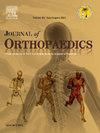Physical functioning before knee arthroplasty is not associated with (standardized) preoperative physiotherapy, but is tied to physical functioning 1-year post-surgery: A prospective cohort study
IF 1.5
Q3 ORTHOPEDICS
引用次数: 0
Abstract
Background
and purpose This study investigates whether a (regionally) standardized physiotherapy approach, employing a stepped-care model, can more effectively enhance preoperative physical function in end-stage osteoarthritis (OA) patients undergoing total knee arthroplasty (TKA) or unicompartmental knee arthroplasty (UKA) and improve postoperative outcomes, addressing the current gap in understanding the impact of such interventions.
Methods
This mono-center observational prospective cohort study followed 216 primary UKA or TKA patients for one-year post-surgery. Preoperative physiotherapy, recorded through self-reported questionnaires, included standardization and treatment frequency details. Physical functioning assessments encompassed quadriceps and hamstrings muscle strength, functional mobility (FM), and range of motion (ROM). Statistical analyses comprised multivariate and single linear regression for both UKA and TKA groups.
Results
Standardized preoperative physiotherapy correlated with superior preoperative extension ROM in TKA patients (B = −3.557, 95 % CI [-.915; −.241]), while less than 10 treatments were associated with superior preoperative extension ROM for both groups (β = −.202, p = .030 and β = −.228, p = .045). No associations were found between location or treatment frequency and preoperative muscle strength or FM. For both groups, preoperative FM, ROM, and muscle strength positively correlated with postoperative levels, except for extension ROM for UKA patients (p = .178).
Conclusion
While adherence to standardized preoperative physiotherapy at an affiliated practice did not significantly correlate with preoperative physical functioning levels, a strong relationship exists between preoperative and one-year postoperative physical functioning levels.
求助全文
约1分钟内获得全文
求助全文
来源期刊

Journal of orthopaedics
ORTHOPEDICS-
CiteScore
3.50
自引率
6.70%
发文量
202
审稿时长
56 days
期刊介绍:
Journal of Orthopaedics aims to be a leading journal in orthopaedics and contribute towards the improvement of quality of orthopedic health care. The journal publishes original research work and review articles related to different aspects of orthopaedics including Arthroplasty, Arthroscopy, Sports Medicine, Trauma, Spine and Spinal deformities, Pediatric orthopaedics, limb reconstruction procedures, hand surgery, and orthopaedic oncology. It also publishes articles on continuing education, health-related information, case reports and letters to the editor. It is requested to note that the journal has an international readership and all submissions should be aimed at specifying something about the setting in which the work was conducted. Authors must also provide any specific reasons for the research and also provide an elaborate description of the results.
 求助内容:
求助内容: 应助结果提醒方式:
应助结果提醒方式:


